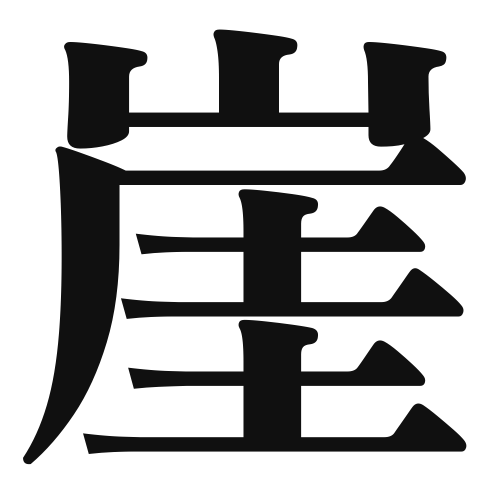1. Overview of Meaning
The kanji “崖” (gake) means “cliff” in English. It refers to a steep, rocky face of a mountain or a high place, often associated with natural landscapes.
2. Formation and Radicals
Formation of the Kanji: The kanji “崖” is a compound character (会意文字) that combines elements to convey its meaning. It consists of the radical “山” (mountain) and the phonetic component “各” (kaku), which contributes to its pronunciation.
Radical: The radical of “崖” is “山” (yama), which means “mountain.” This radical indicates the character’s connection to elevated landforms.
3. Examples of Usage
Common Words and Phrases: Some common words that include “崖” are “崖っぷち” (gakeppuchi), meaning “the edge of a cliff,” and “崖崩れ” (gakekuzure), meaning “landslide.”
Example Sentence in Daily Conversation: “彼は崖の上から美しい景色を見ていました。” (Kare wa gake no ue kara utsukushii keshiki o mite imashita.) – “He was looking at the beautiful scenery from the top of the cliff.”
4. Synonyms and Antonyms
Similar Kanji: A similar kanji is “山” (yama), which means “mountain.” While both refer to elevated land, “崖” specifically denotes a steep cliff, whereas “山” refers to a broader concept of a mountain.
Opposite Kanji: An antonym could be “谷” (tani), meaning “valley.” While “崖” refers to a high, steep area, “谷” indicates a low area between hills or mountains.
5. Cultural and Historical Background
Connection to Japanese Culture: Cliffs are often depicted in Japanese art and literature, symbolizing both beauty and danger. They are common motifs in traditional landscapes.
Proverbs and Idioms: One relevant proverb is “崖っぷちの生活” (gakeppuchi no seikatsu), which translates to “a life on the edge of a cliff,” meaning living in a precarious or risky situation.
